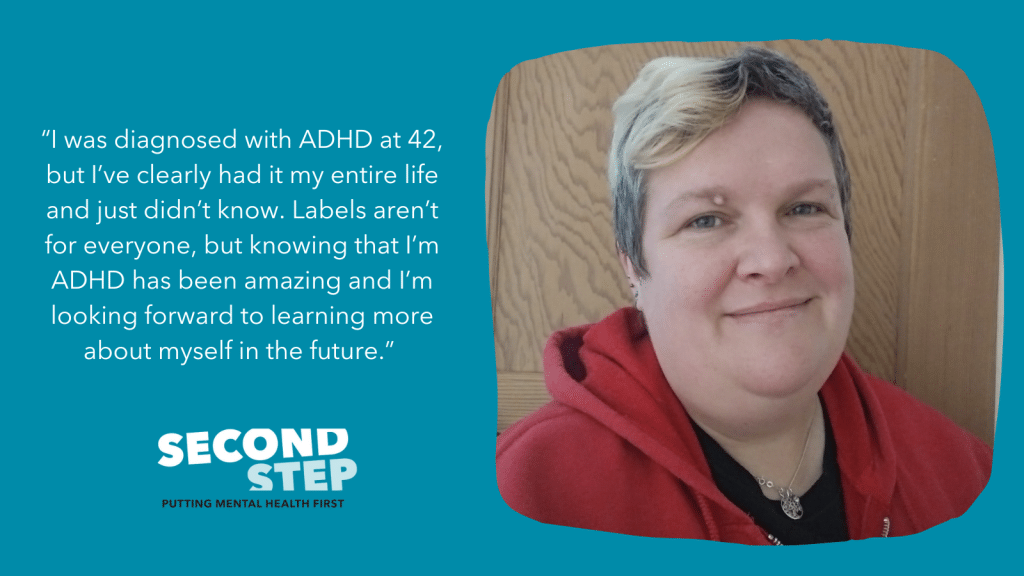Navigating adult ADHD
Recovery Coach Jean Deacon opened up about her adult ADHD (Attention Deficit Hyperactivity Disorder) diagnosis in a recent Learning Lunch for colleagues, offering valuable insights into her journey from childhood to managing ADHD in the workplace. Here she shares her story so far.
Just before I delivered my Learning Lunch for my colleagues, I had a quick look on Google at the number of people who are autistic and ADHD in the UK. 1% are on the autistic spectrum and 8% are ADHD.
I was diagnosed earlier this year at 42, but I’ve clearly had ADHD my entire life and just didn’t know. When I think back to primary school, I can think of two boys who definitely had ADHD, so I often wonder why it was picked up in them and not me. This is a common question adults diagnosed often ask – how did it get missed in me?
The ADHD brain is very much looking for that dopamine hit, so procrastination is a big challenge with people who have ADHD. I was always bright at school and I finished things early and always asked for more work. I was kind of a model pupil in lots of ways because I got my work done, I would disappear into my own world and think about things. That was the only criticism my teachers had: was that I was a bit of a daydreamer. Which is the big thing that means people often get missed. You can be a high achiever at school, but you can still have a lot going on in your brain that no one else sees. As soon as I realised I had ADHD, I was looking things up and realising it was all connected. I just always assumed that everyone has four conversations and a song going round in their head at the same time.

Nowadays, there is a lot more positivity and support for neurodiversity. Instead of being seen as a life sentence, it’s just seen as difference. There’s also lots of support through initiatives such as Access To Work, who will provide funding for certain support in the workplace. You don’t need to be diagnosed for Access To Work and it can take some time, but it’s worth looking into.
ADHD can present differently in men and women and it’s more often picked up in boys than girls. I don’t know the science behind it and I’m still trying to find techniques that work for me, but some things I’ve definitely found useful are:
- My amazing manager emailing me notes after a meeting
- Moving around as and when I need to – standing up or stretching during a meeting
- Reading around the subject – nooks like Dirty Laundry and social media accounts like ADHD_LOVE are just amazing. Social media isn’t always great, but finding communities where I could identify and know that I’m not on my own was fantastic.
- Creating a community – I started a Neurodiversity community on Second Step’s Viva Engage and it’s a great place for people to share their experiences and learn from one another
- Making lists – I love a list!
And here are some tips for ADHD that colleagues have shared with me:
- Making changes to working hours that better suit personal preference
- Having quiet spaces to work
- Using noise cancelling headphones
- Fidget spinner type distractions
- Going for a walk
- Notes and lists are really helpful too.
- Knowing about ND doesn’t fix it
I know that labels aren’t for everyone, but the label of knowing that I’m ADHD has been amazing and I’m looking forward to learning more about myself in the future.
